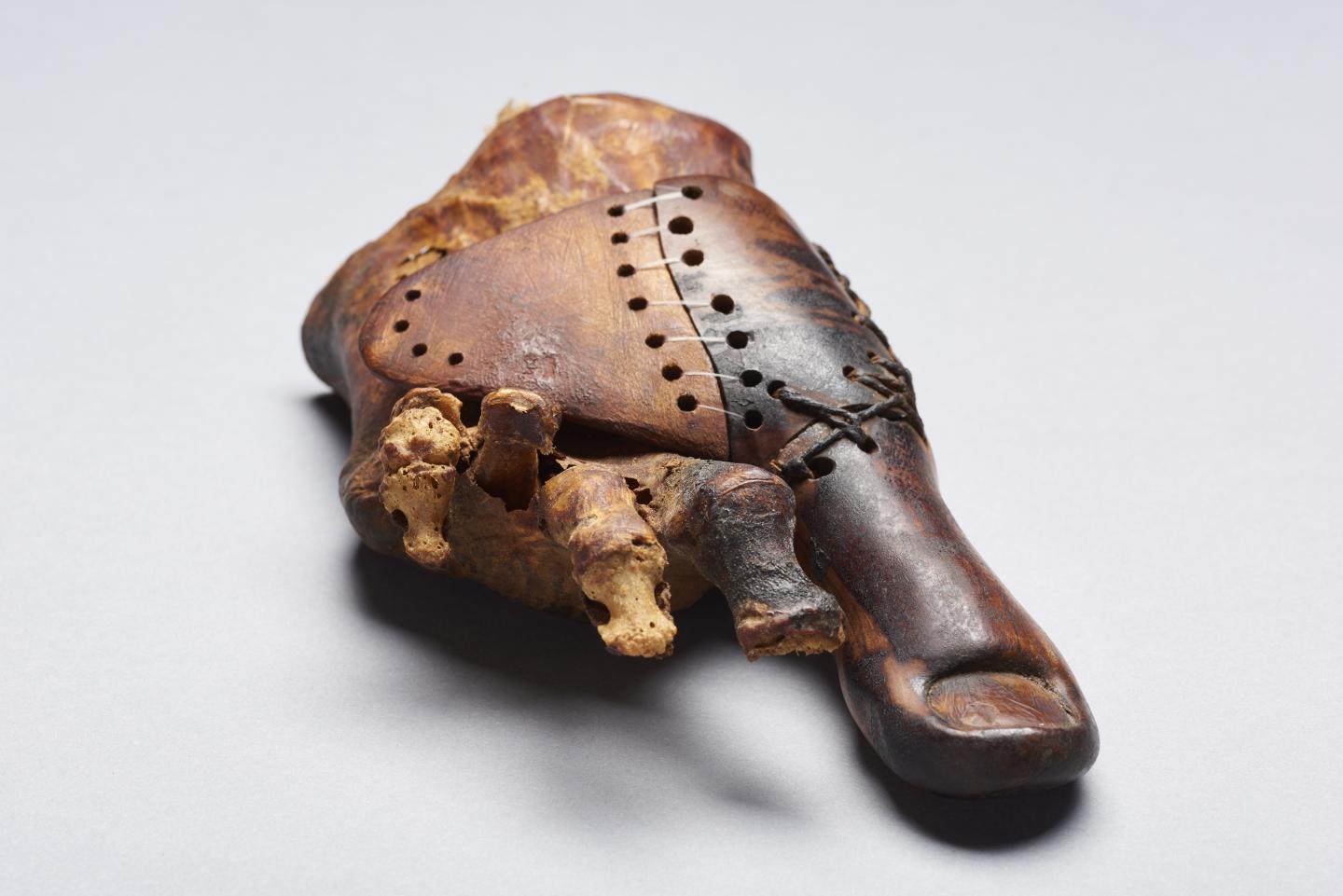<![CDATA[The biggest history news stories of the last seven days, including a new examination of one of the world’s oldest known prosthesis, a study suggesting Native Americans could have been exposed to carcinogenic bitumen, and a set of supposed Nazi artefacts from Argentina that might not be what they seem New insights into remarkable Ancient Egyptian prosthesis Egyptologists from the University of Basel have been examining a 3,000-year-old prosthetic big toe from Ancient Egypt. Discovered in a female burial from the necropolis of Sheikh Abd el-Qurna close to Luxor, the prosthesis had been studied before, but the Swiss team have now examined it using the most cutting-edge techniques, such as modern microscopy, X-ray technology and computer tomography. It’s been revealed that the remarkable artefact was refitted several times to its owner, a priest’s daughter. The researchers have also reclassified the materials used in the wooden toe’s construction, and determined how the prosthesis was made and utilised. The new analysis has revealed the skill involved in the toe’s construction, particularly in the mobility the prosthesis would have offered, and the intricately designed belt strap which would have fastened it to its wearer. Together with experts from ETH Zurich, the scientists from Basel are assessing the natural and man-made structures of the tomb and its surroundings. According to a statement from the University: “The specialists are currently developing geometric precise digital elevation, landscape, and architecture models for this area. These will then be combined to an archaeological and geological 3-D map that will illustrate the morphology of the terrain as well as the investigated subterranean structures. On that basis, the researchers want to reconstruct and simulate the development of the cemetery and its use phases.” Water Bottles used by Native Americans could have been poisonous A new study suggests that the water bottles manufactured by Native Californian Americans could have been detrimental to their health. Scientists recreated the Native American water bottles to gain insights into the manufacturing process. In particular, they wanted to see if bitumen, a material derived from petroleum, could have had an impact on the indigenous Californians’ health. The team made two types of ancient water bottle using traditional Native American methods. One of the bottles was lined with soft bitumen, known as ‘malak’, which washes ashore after seeping through the ocean floor, and one was lined with hard bitumen, known as ‘woqo’, typically found in land deposits. “In accordance with historical records, we used a Monterey chert flake and a bird bone awl to weave baskets from soft rush plants from California. We sourced abalone shells to use as mixing dish and heated the bitumen with metavolcanic pebbles before applying to the basket by hand using a sea mammal bone,” said Kevin Smith, co-author of the study and a PhD student from the University of California. Bitumen consists of polycyclic aromatic hydrocarbons (PAHs), which are linked with health problems such as cancer, hormone imbalances, organ damage and developmental impairments. After studying the recreated bottles, the scientists behind the study found that although storing water in the bitumen lined bottles didn’t cause dangerous levels of PAHs to leech out – even after two months, olive oil quickly became contaminated, suggesting the storage of fatty foods could have been a health risk. Dr Sabrina Sholts, lead author of the study from the Smithsonian Institution’s National Museum of Natural History, said: “To our knowledge, this is the first time that experimental archaeology has been used to quantify PAH exposure in an ancient population. We believe that our research provides a deeper temporal context for understanding health impacts and evolutionary changes related to harmful chemical exposure caused by human technology.” The study has been published in the journal Environmental Health. Nazi artefacts found in Argentina could be fake On 20th June, the New York Post reported a “a trove of original Nazi artefacts” had been discovered in Argentina. Among the objects were an original bas relief of Hitler and a medical device used for measuring heads. The collection of 75 objects was found hidden in an art collector’s home, just outside the capital city of Buenos Aires. According to the Associated Press, the objects are believed to have belonged to high-ranking Nazis in Germany. “Our first investigations indicate that these are original pieces,” Argentine Security Minister Patricia Bullrich told the Associated Press On 24th June, the Washington Examiner reported that the objects could be fake, citing a leading auctioneer of Nazi artefacts, Bill Panagopulos, president of Maryland-based Alexander Historical Auctions. Panagopulos said the items were ‘obvious replicas’, after seeing video footage and pictures of the artefacts. The art collector whose home the objects were discovered in is still under investigation. Image courtesy of University of Basel, LHTT. Image: Matja� Kačičnik ]]>
History News of the Week – Ancient Egyptian Prosthesis Studied
